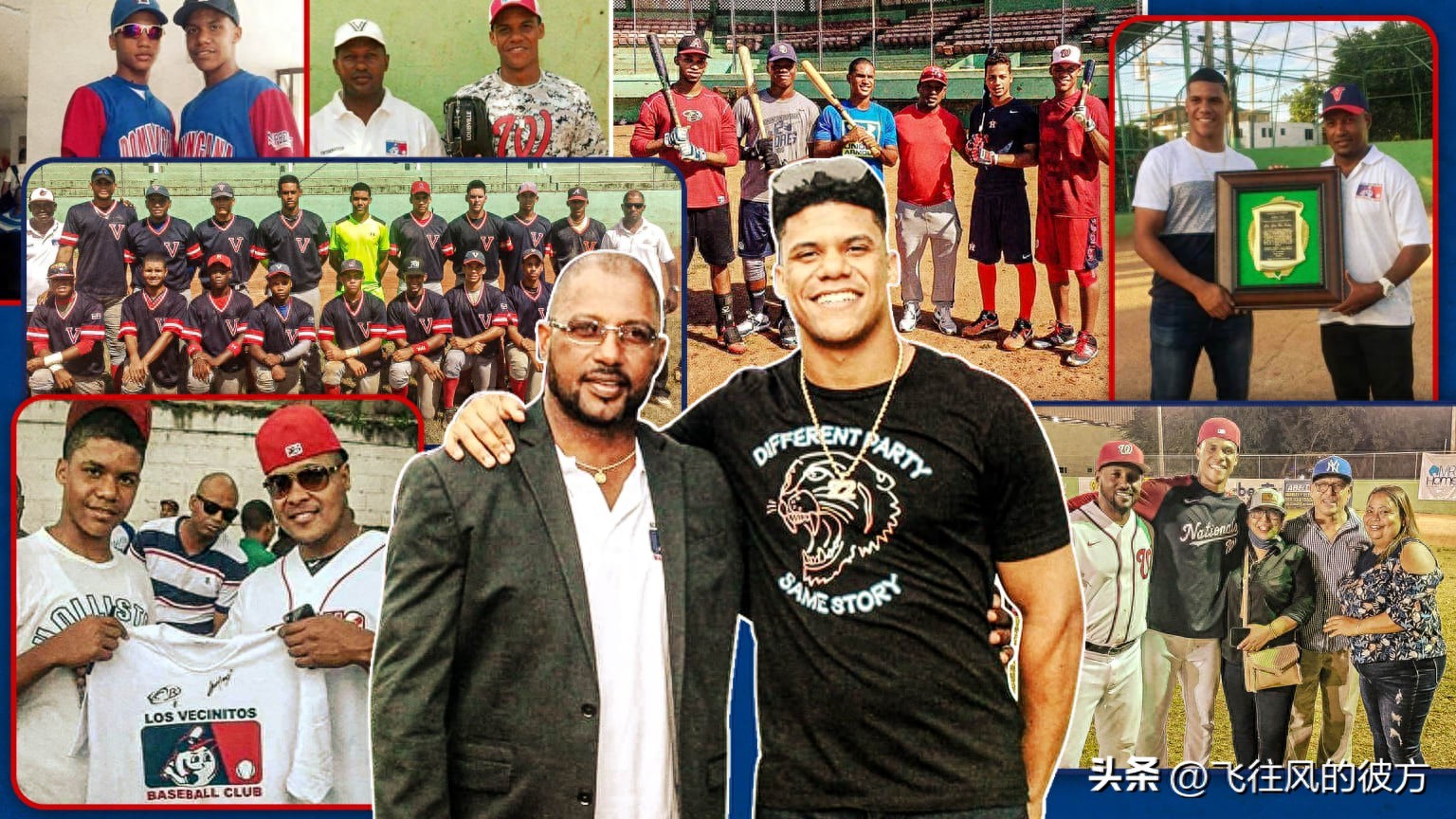If there is no designation from a master, Juan Soto may still be a pitcher

They all said that Rafael Zapata was crazy.
The head of the Dominican Youth Baseball Academy had a bold idea: he wanted to transform one of his 14-year-old star pitchers into a fielder. The problem was that the kid couldn't hit a ball or run bases at the time.
"I called a meeting of all the coaches," Zapata said in Spanish through an interpreter for MLB.com reporter Ricardo Montes de Oca, "and I said I was going to turn him from a pitcher to a hitter." Someone said I was crazy on the spot, but I didn't care. I told them, 'I know he has real money hidden in his bat.' '"
The bat is worth a fortune — $765 million to be exact.
That 14-year-old pitcher was none other than Juan Soto. When the New York Mets play their season opener against the Astros on Thursday, the striker will be in a new jersey. This offseason, he signed the biggest contract in the history of professional sports — 15 years — $765 million, breaking the record set by two-way superstar Shohei Ohtani just last year.
There's no doubt that it was Soto's bat that earned him this historic contract. Without Zapata, the baseball world might never have known the genius who has been compared to Ted Williams and Barry Bonds.
"He's been an important mentor in my career and life," Soto said, "and he's been guiding me since I was 10 years old." He's like a father on the baseball field. "
But even Soto himself was initially reluctant to Zapata's renovation plans.
"He didn't want to give up being a pitcher," Zapata, affectionately known as 'Pape' in the Dominican Republic, recalled, "and all I could tell him was: 'Even if you switch to outfield and strikes, you can still pitch on the board occasionally.'" '"
In the wildest baseball dream, he should have been on the Major League Pitcher's Hill instead of the strike zone. But sometimes, it takes a "crazy" coach to see what others can't.
Zapata's inspiration stems from another Dominican pitcher's successful transformation story. The player turned into a fielder with skills other than pitching and eventually landed a major league contract.
"There was a kid in the academy," Soto recalled, "who never held a bat, just a pitcher. After a pitch practice in the bullpen, Raphael asked him to practice sprinting with the other pitchers. As a result, the guy was a dead man. "
The lightning-fast pitcher is called Sauris Mejia. From the second day, Zapata transformed him into an outfielder and taught him short and contact hitting techniques to play to his speed advantage. In 2014, Mejía signed with the Detroit Tigers.
"So Raphael thought: 'I can raise Juan in the same way.'" Soto said.
While Soto's selling point isn't speed, Zapata has spotted amazing ball selection from his limited play. The Bole also keenly captured the scarcity of the 2015 international rookie in the center of the left, and developed a transformation strategy.
The transition was full of unconventional training – which made the word "crazy" come up again – and intense grinding.
What we see today is Soto, the No. 1 player on base (0.421), career OPS 0.953, 201 hits, four All-Stars, three top-five MVPs, five silver baseball awards, all before the age of 26 — a product of tennis?
"That's where his batting mechanics come from," Zapata said of his disciple's signature home run distribution, "and I found that tennis shots always fly flat and no high flyers." I taught Soto to pursue that touch feeling. We trained with tennis rackets and designed special exercises for the left and right hands. "
Soto further explains: "It's about hand control, keeping the extension with the backhand. It may seem crazy to outsiders, but it works. The stats back it up: 58 per cent of Soto's home runs are in the centre-right field. The latest Statcast stats show that he can hit a home run with a wider range of touches than the average hitter — usually a hitter needs to hit the ball higher up to hit the ball.
Zapata's tennis training is far from over. After signing with the Nationals for $1.5 million in 2015, Soto returned to the Dominican Republic regularly during his time in the minor leagues, training at Zapata's academy.
"One batting practice where he hit 60 home runs," Zapata recalled, "and the crowd was like a party, and people were crazy about him." But all home runs flew to the right field. "
When Soto walked up to Zapata in a cheer and announced, "I'm done," the instructor replied in the negative.
"You're not done yet. "
"Why? "
"Because you haven't fired at the left field yet. "
Zapata worries that years of tennis training have gone down the drain. But Soto didn't disappoint, hitting a number of home runs into the left field before calling it a day.
The long and arduous training not only made Soto successful, but also rewarded the guiding man who shaped his baseball career. That's why Soto's career starter – the first goal of his first start – meant so much to Zapata.
"His first big league hit was a home run from the left field," Zapata said, "and I was overwhelmed with emotion when I watched it." "
Zapata's influence on Soto cannot be overstated. He saw potential when Soto was 14 years old, and now the 26-year-old superstar has just embarked on the fattest contract in sports history. The most classic example of this bond occurred in the early days of Soto's transformation.
"When I was 14 years old, I saw him imitating his teammate — an older kid who was looking for a major league contract. I immediately stopped the training, pulled Juan aside and said, 'You're Juan Soto, you don't need to imitate anyone.' You'll be in the big leagues, but you have to be yourself. '"
Twelve years later, Soto is perhaps the most well-rounded baseball player today. But without that moment, he might never have been able to reach this height.
He is always grateful to the Dominican mentor – the key figure who shaped today's superstar.
"He's my spiritual mentor," Soto said, "and he taught me how to understand the game and taught me most of the techniques." He was always there to support me whenever and wherever I was. I can't put this gratitude into words. "


Wonderfulshortvideo
why is this so satisfying?


Hyeseong Kim, human highlight reel!


Shohei Ohtani's 102 mph pitch is the fastest by a Dodger this season. 😳


JUST IN: Ronald Acuña Jr. announces he is the first @T-Mobile


The Phillies cleared the bases in the most CHAOTIC way imaginable!


One Piece x Dodgers, the collab we never knew we needed. 😍


There’s a new team atop the AL East standings 👀








 Links
Links
 Contact
Contact
 App
App


